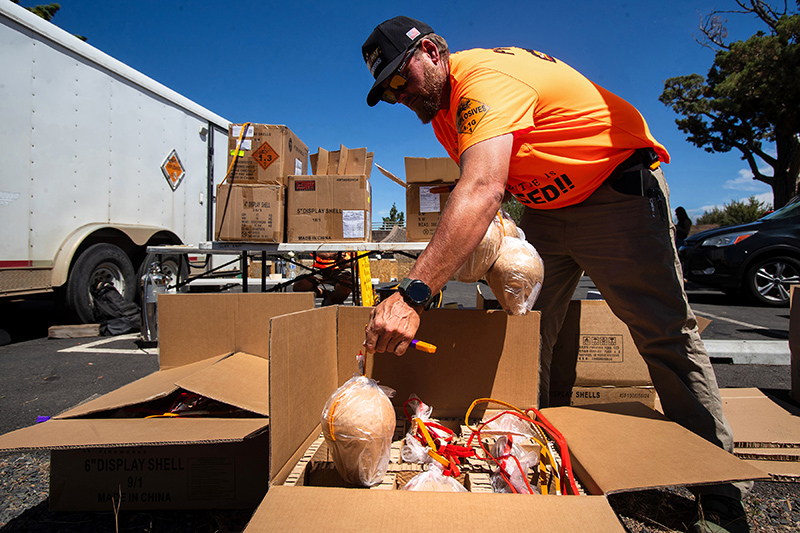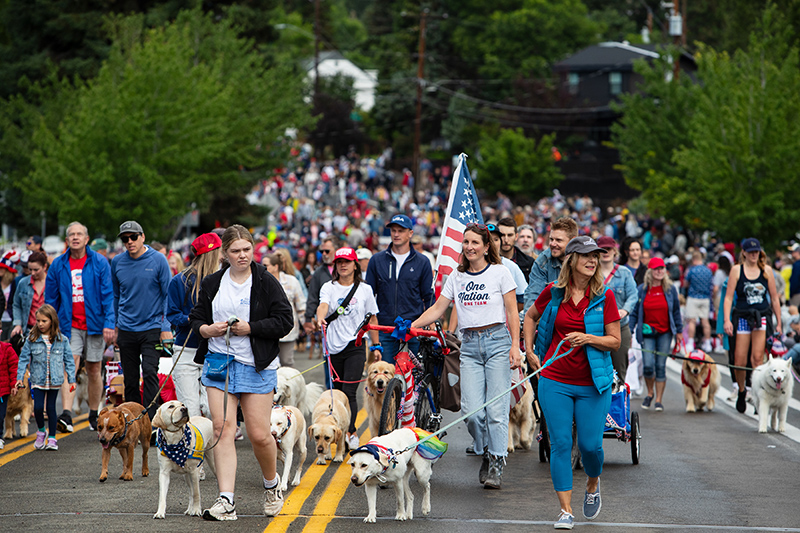The forgotten architect behind Daytona Speedway
Published 12:00 am Sunday, July 8, 2018
By 1949, Bill France Sr. could tell that the famous stock-car races on the hard-packed sands of Daytona Beach, Florida, would soon be impractical.
He had moved down from Washington 14 years earlier and founded NASCAR in 1948. He knew the development of hotels on lucrative oceanside property north of Daytona Beach would eventually encroach on the race territory, and he knew that the beach could barely withstand the pounding of heavy cars sweeping through the turns.
France had much bigger ideas for a racetrack, and he needed someone who could make them work.
France began an alliance with Charles Moneypenny, a lanky, slow-talking Daytona Beach city engineer known by driver Mario Andretti for wearing tennis shoes with business suits.
Moneypenny put France’s ideas to paper to create NASCAR’s most famous racetrack: Daytona International Speedway.
On Saturday night, Daytona hosted the Coke Zero Sugar 400, a race formerly held on July 4 and known as the Firecracker 400. It has now been run for the 61 consecutive years.
Charlie Moneypenny, who died in San Diego in 1992, at 96, went on to help design other racetracks, including Talladega Superspeedway and Michigan International Speedway. Michigan is a 2-mile, D-shaped oval that inspired other track designers.
Yet Moneypenny is barely mentioned in the history of the sport. NASCAR archivists do not have much material on him. Ed Hinton wrote a book on the Daytona racetrack in 2001 and can barely recall Moneypenny’s name (except as James Bond’s assistant in the movies).
“Not bashing NASCAR at all, but truly, who do we remember other than France people?” said Van Walling, an engineer and motor sports historian, who was a pen pal of Moneypenny’s. “I don’t think Charlie was a guy who wanted a lot of credit, anyway.”
France wanted a giant, state-of-the-art, 21⁄2-mile racetrack on the mainland west of Daytona Beach — another Indianapolis Motor Speedway, only with higher banks so the stock cars could reach the same speeds as Indy cars.
So in 1954, he got a credential for the Indy 500 and went to take some notes. The American Automobile Association, then the sanctioning body of Indy car racing, knew France’s series was rapidly becoming a competitor, so the AAA threw him out of the speedway.
But France learned things from the trip anyway. He came away with a better idea of what he wanted, then had to tinker with it. In a September 1958 interview with The New York Times, he said he wanted a track as fast as, if not faster than, the high-banked oval track in Monza, Italy, which was built in 1922 and redesigned in 1955.
“I want high banks, but straight, planed banks where cars can pass three abreast,” France said in the Times article. “I want plenty of room everywhere. And off that, I’d like a fast-curved 2 miles of sports-car track running in the infield.”
France wanted a true 21⁄2-mile oval, like Indianapolis, which opened in 1909. But the property in Daytona Beach was not wide enough to accommodate an oval, so he opted for hybrid triangle and oval — a tri-oval. With that layout, fans could see more of the action, especially passes on those high-banked curves. Stock cars, sports cars and even Indy cars could race at his facility.
Moneypenny showed France that it could be done, Dan Warren, a Daytona Beach city lawyer who helped France raise money for the track, said in a 2008 interview with The Daytona Beach News-Journal.
“It was strictly an engineering problem, and Charlie was an engineer,” said Warren, who died in 2011.
He added: “Bill had pessimism. He said, ‘Charlie, I’m just not sure this track will fit on this piece of land.’ Charlie said, ‘I think it will, Bill.’ He said, ‘I’ll go back and draw up a diagram of what it would look like.’ ”
France and Moneypenny are both credited as architects of the speedway, although it would be fair to say that France’s role was to be the ideas guy and make the finances work. Moneypenny, a Michigan native trained by the Army Corps of Engineers, made France’s vision a reality.
Moneypenny studied up. Walling said Moneypenny visited tracks near Detroit used by Ford and General Motors to test passenger cars. Engineers there laid out details that showed Moneypenny how to transition the flat straightaways in and out of the high-banked corners.
“I know of no textbook on the subject of how to build a racetrack,” Moneypenny told The News-Journal in 1959. “When I began research on this track back in 1953, the first thing I learned was that most tracks are laid out strictly by guesswork.”
The straightaways would be 50 feet wide, and the flat-planed turns banks would be 31 degrees, “as steep as they could lay asphalt,” France said in a 1978 interview with Sports Illustrated. “I wanted our stock cars to be as fast as the Indianapolis cars,” he added, “and with the high banking, that seemed possible.”
To accomplish that, the builders had to move tons of dirt, which is why they made a 29-acre hole in the infield that was filled with water and became Lake Lloyd. They raced speedboats on it.
The First Annual 500 Mile NASCAR International Sweepstakes at Daytona (the race would not be known as the Daytona 500 until 1961) was held on Feb. 22, 1959, with Johnny Beauchamp thrilling more than 40,000 spectators when he apparently edged Lee Petty, Richard’s father, by inches.
Beauchamp’s victory was reversed three days later when France viewed photographs of the finish that showed Petty winning — barely. The winning average speed was a sizzling 135 mph, a record at the time for an American-built stock car.
When Daytona was built, only one other so-called super speedway hosted NASCAR races: the 1.366-mile egg-shaped oval in Darlington, South Carolina, which opened in 1950. Daytona was a vast upgrade, and its 500 became NASCAR’s biggest race.
Indy cars did not fare so well. Eleven days before the first 500-mile race at Daytona, Marshall Teague tested an Indy car there at an estimated 140 to 160 mph. His car spun and flipped, the driver’s seat tearing loose and flying away, with Teague strapped into it. He died instantly.
France scheduled an Indy car doubleheader of two 100-mile races at Daytona in April 1959, and driver George Amick died when a gust of wind hit his car in the opening race, spinning him out into a wreck. Only 7,500 spectators attended, and Indy cars never took on Daytona again.
But France was so encouraged by Daytona that a decade later, with help from Moneypenny, he built an even bigger, faster track: the 2.66-mile Alabama International Motor Speedway, which opened in 1969 and is now Talladega Superspeedway.
In 1964, NASCAR announced plans to launch a stock-car-racing series in Japan. Moneypenny drew up plans for an oval and a road course. But funding ran out, and the oval was never completed.
In 1967, Moneypenny was asked to design a 2-mile, high-banked oval on a former farm in the Irish Hills near Brooklyn, Michigan, 70 miles west of Detroit. Michigan International Speedway now hosts two NASCAR races each summer.
But Moneypenny’s masterwork is still Daytona, even though since 1988 cars there and at Talladega have had to use restrictor plates to reduce power and speed. His racetrack design has never gone out of style.
Walling studied racetrack design at Lafayette College in Pennsylvania 40 years ago and has continued pursuing it as a hobby. His book, “Oval Track Almanac,” details many of the tracks that were designed but never built. Several were either drawn up by Moneypenny or inspired by him. Walling said Moneypenny, who never wanted a staff, should be in the NASCAR Hall of Fame.
“He didn’t get the credit he deserved,” Walling said.








